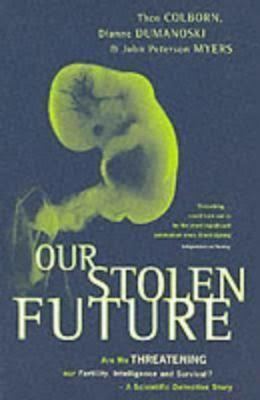8.2 /10 1 Votes8.2
Language English Publication date 1996 ISBN 978-0-525-93982-5 Page count 306 OCLC 33246122 | 4.1/5 Goodreads Publisher Dutton Pages 306 Originally published 1996 Country United States of America | |||||||||||||||||||||||||||||||||
 | ||||||||||||||||||||||||||||||||||
Toxicology books The fluoride deception, Slow Death by Rubber Duck: Th, The Hundred Year Lie, Toxicology Handbook, Dying from dioxin | ||||||||||||||||||||||||||||||||||
Our stolen future revisited 15 years later full version
Our Stolen Future: Are We Threatening Our Fertility, Intelligence, and Survival? A Scientific Detective Story is a 1996 book by Theo Colborn, Dianne Dumanoski, and John Peterson Myers. The book chronicles the development of the endocrine disruptor hypothesis by Colborn. Though written for the popular press in narrative form, the book contains a substantial amount of scientific evidence. A foreword from then Vice President Al Gore increased the book's visibility. It ultimately influenced government policy through congressional hearings and helped foster the development of a research and regulation initiative within the United States Environmental Protection Agency (EPA).
Contents
- Our stolen future revisited 15 years later full version
- Our stolen future toxic chemicals in children s products
- References
The authors also started a website which continues to monitor and report on endocrine disruptor scientific research.
Thousands of scientific articles have since been published on endocrine disruption, demonstrating the availability of grant money for research on the hypothesis raised by Our Stolen Future. For example, a symposium at the 2007 American Association for the Advancement of Science (AAAS) meeting explored the contribution of endocrine disruption to obesity and metabolic disorder. As is often the case, there is strong animal evidence but few epidemiological tests of predictions based on the animal experiments.
A recent analysis of Center for Disease Control (CDC) data finds an extraordinary increase in risk to type II diabetes as a function of exposure to persistent organic pollutants (POPs), in particular synthetic organic chemicals such as organohalogens.
